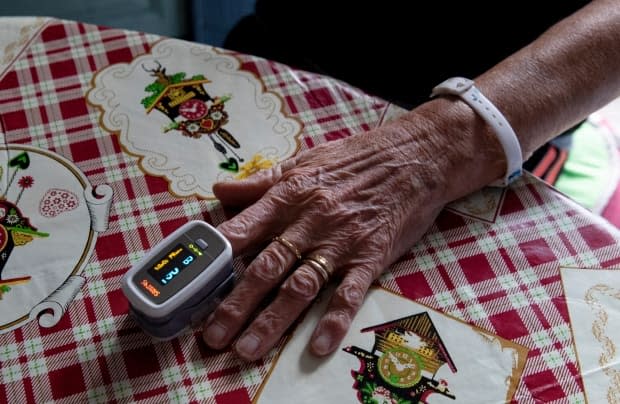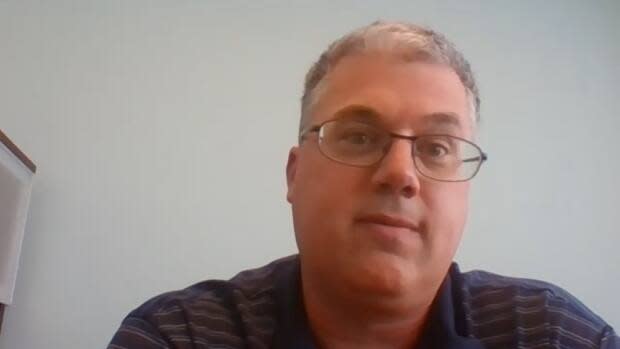What happens when you test positive for COVID-19 in Nova Scotia?

With record numbers of COVID-19 patients in Nova Scotia, a team at Nova Scotia Health has been working around the clock to fine-tune a program that will monitor those who are sick at home.
It's a system they believe is the only one of its kind in the country — and it's why the health authority has been pleading with those who are waiting for test results to answer their phones.
Dr. Ashley Miller, the chief medical information officer for the province, and Graeme Kohler, the director of primary health care in the northern zone, came up with COVID Community Virtual Care during the first wave.
Aggressive variants have put new pressure on their ability to stay in contact with hundreds of people at a time as the province grapples to contain the coronavirus.
"We're actually looking to intervene quicker because we don't want people to be at home, unwell, and missing the window of opportunity to be treated in the hospital," said Miller.

So what happens if you test positive in Nova Scotia?
It starts with that phone call.
On the other line is a physician or clinician who will deliver the test results, and then do an immediate assessment on the patient.
They'll ask about any other medical conditions, and flag any high-risk people to a separate group that will be monitored closely.
Miller said she has made many of those phone calls herself. Many express fear, but Miller said she tries to ease their concerns.
"I will say overwhelmingly that people have communicated to us that they feel reassured that they're hearing from a health-care provider and they're connected with this team," she said.
At-home monitoring
The patient will then be asked if they want a pulse oximeter. It's a small monitor that is easily placed on the finger and tracks oxygen levels.
If the patient agrees, one will be sent to their doorstep within 24 hours. Miller said they've sent hundreds of them out in the last 72 hours alone.
The package comes with instructions on how to use the monitor, as well as a phone number to reach an on-call physician directly.
If an otherwise healthy person's oxygen level is below 92, they are told to call the physician immediately. For pregnant women, that threshold is 94 per cent. Those numbers mean the patient needs to be admitted in the hospital.

The percentages are actually higher than the 90 per cent benchmark that was used in the first wave — a reflection of how fast the new variants progress, said Miller.
Tracking oxygen can be crucial in showing what is really going on. Miller points to cases where people have died suddenly at home. Sometimes, people who have low oxygen levels can still talk without getting out of breath.
"That's the rationale for our program," she said. "We recognized very early on that sometimes people can have quite low oxygen levels but they don't really feel it."
Nova Scotia Health received 1,000 pulse oximeters through a grant from the QEII Health Foundation, and the health authority recently bought thousands more to ensure that anyone who wants home monitoring will receive one.
Miller said home monitoring has already led to several Nova Scotians being admitted in the third wave, and they were taken to hospital with minimal contact with others.
"They actually were able to bypass the emergency department, and that's a pretty incredible feat," she said.
Missed calls a significant issue
Miller and Kohler said the program hinges on people picking up their phones, so the physicians don't have to spend their time trying to find other contact information.
Kohler estimated 20 per cent of calls go unanswered, even though people know they're waiting for their test results.
He acknowledged part of the problem has been that call display shows an unknown caller, and they won't leave a voicemail. Some people refuse to answer calls from unknown numbers because they assume it's a scam.

Kohler said nearly all physicians and clinicians who are making the diagnosis calls will have phones that read NS Health on the display as of Wednesday.
He said they'll also send text messages, telling people they are about to call and they need to answer their phones.
Once someone picks up, they'll be asked for the last four digits of their health card number and their birthdate.
"You have every right to ask for us to repeat back to you your full health card number and also to provide something else," Kohler suggested for those who still feel uncertain.
But after spending nearly a year figuring out this system, Kohler and Miller are hopeful they are helping people before they realize they need it.
MORE TOP STORIES

